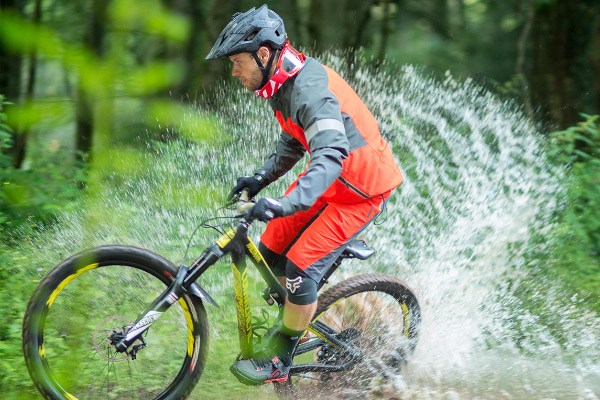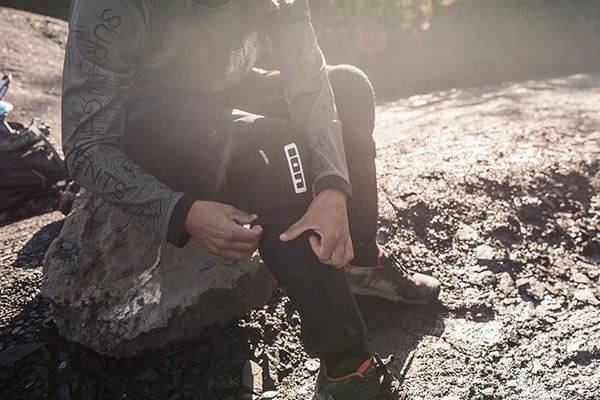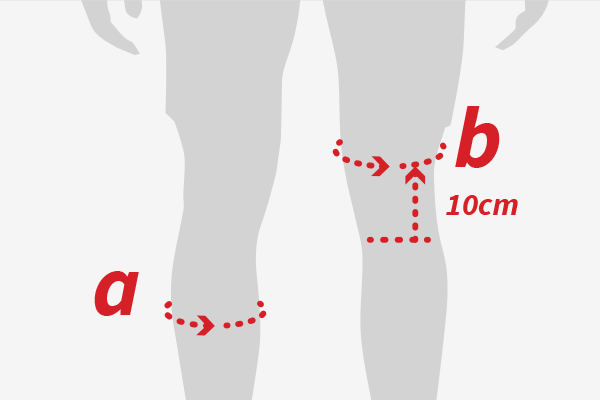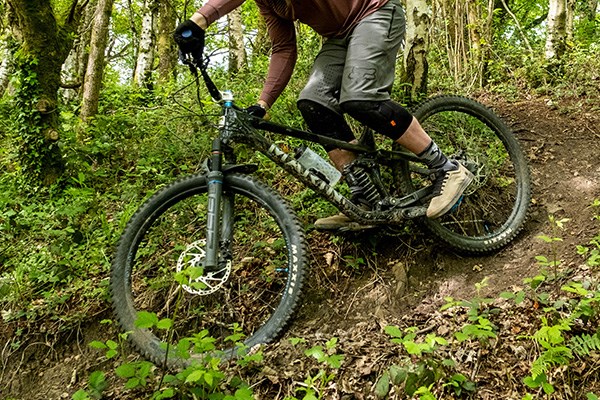Falling off is all part of the fun when you are mountain biking. Of course, you don’t want to hurt yourself, so wearing some protection is always a good idea. After a helmet, kneepads are probably the most important bit of protective equipment you can wear. This is because, if you do fall, your knee will likely be the first part of you to hit the ground.
Kneepads come in many shapes and sizes but can be split into two basic types: heavy duty knee pads offer the best protection levels while lightweight kneepads are more comfortable.
Types of Knee Pad
Heavy-duty knee pads
If you want the best protection for your knees, then heavy-duty knee pads are whet you need. These have a substantial protective layer around the kneecap that protects from impacts as well as abrasions. While a hard shell combined with a shock absorbing pad is the traditional way of offering high levels of protection there are also softer options that deliver similar impact performance.

Shock absorbing materials that mould to your leg shape and allow you to move freely make the pad more comfortable. D3O and VPD compounds do this while offering high levels of protection. Some heavy-duty knee pads borrow technology from the motorcycle market. Look for pads certified to the EN 1621-1 standard to be sure that you are getting the best levels of protection for your knees.
Some of these knee pads also have padding around the side of the knee. This offers extra protection that is especially useful if you bash your knee on the top tube of your bike. Adjustable straps ensure a secure fit to keep the pad in place when you hit the ground.
Lightweight kneepads
With only a thin protective layer around the knee, lightweight kneepads offer protection from abrasions rather than impacts. This means that the pads are much less substantial making them more comfortable, especially when you are pedalling. Lightweight pads also tend to be better ventilated and tend to keep you cooler as you ride.

Some lightweight kneepads offer a little more impact protection than others. Look out for D3O padding or an EN 1621-1 rating for impact protection. Keeping things light these pads don’t tend to have straps to keep them in place. This makes them more likely to move after an initial impact.
Which pads do I need?
While heavy-duty kneepads are aimed at gravity riders and lightweight ones for trail riders, there is a lot of crossover. Many trail riders will opt for more protection while some gravity enduro riders like to keep things minimal.
When choosing a knee pad the things you need to know are: how much protection you want, and how much comfort you’d like. If you want the most comfort with some abrasion protection, then a minimal lightweight kneepad is all you need. If on the other hand you want to reduce the chances of a painful injury and don’t mind riding with a little restriction around your knees, then a heavy-duty pad is what you want.
Ventilation
Another key comfort aspect to consider is ventilation, especially for summer riding. Look for breathable materials, perforated padding and open backs that allow more airflow around your knees. This will allow sweat to evaporate to keep your knees cooler and drier.
Knee pads with holes in the shell offer the best ventilation making them especially good for long mid-summer trail rides.

Shin Protection
As well as offering protection for your knees some knee pads also protect your shins. These pads are longer and extend down your calf and shin. Most of these pads only cover the top part of your shin. This is to guard against pedals strikes when you slip your foot off, which is the most common way of injuring your shin.
Both lightweight and heavy-duty shin guards are available with extra shin protection.

Fit
Getting the right fit is key. If the knee pad is too small, then it will be uncomfortable and if it’s too big it will move around as you ride. Adjustable straps help to adapt the pad to your individual leg shape but there is no substitute for getting the correct size.
To choose the right knee pad size you’ll need find out your leg size. First measure your calf at the widest point (a) then your thigh about 10cm above your knee (b). Now you can compare your measurements to the manufacturers size chart to get the perfect fit.






